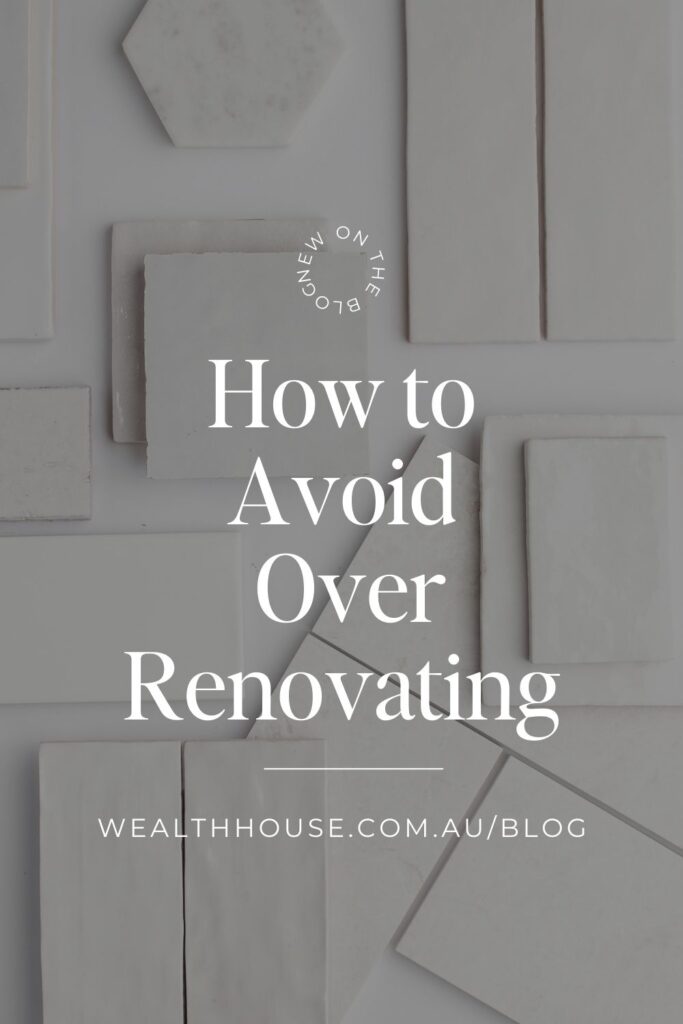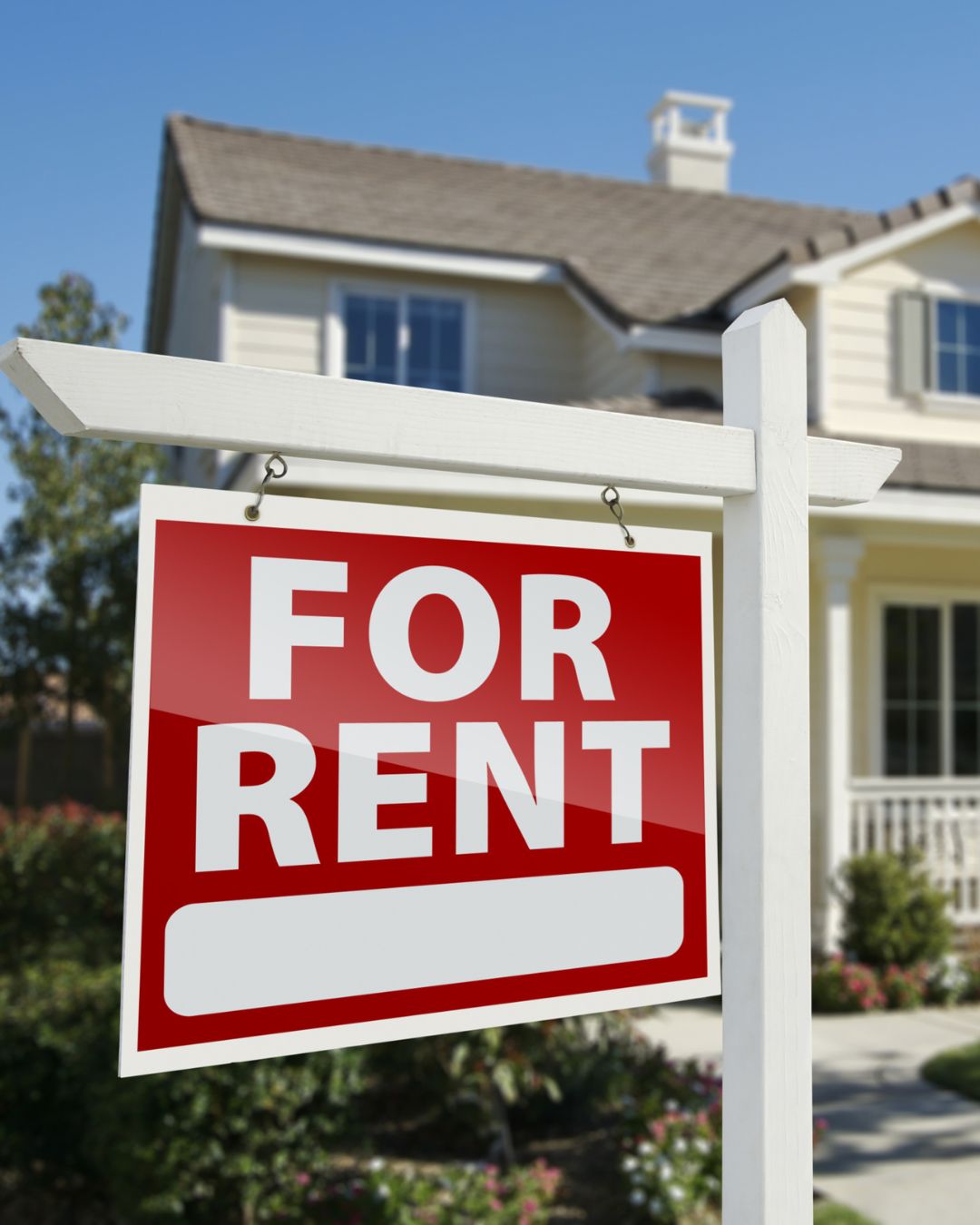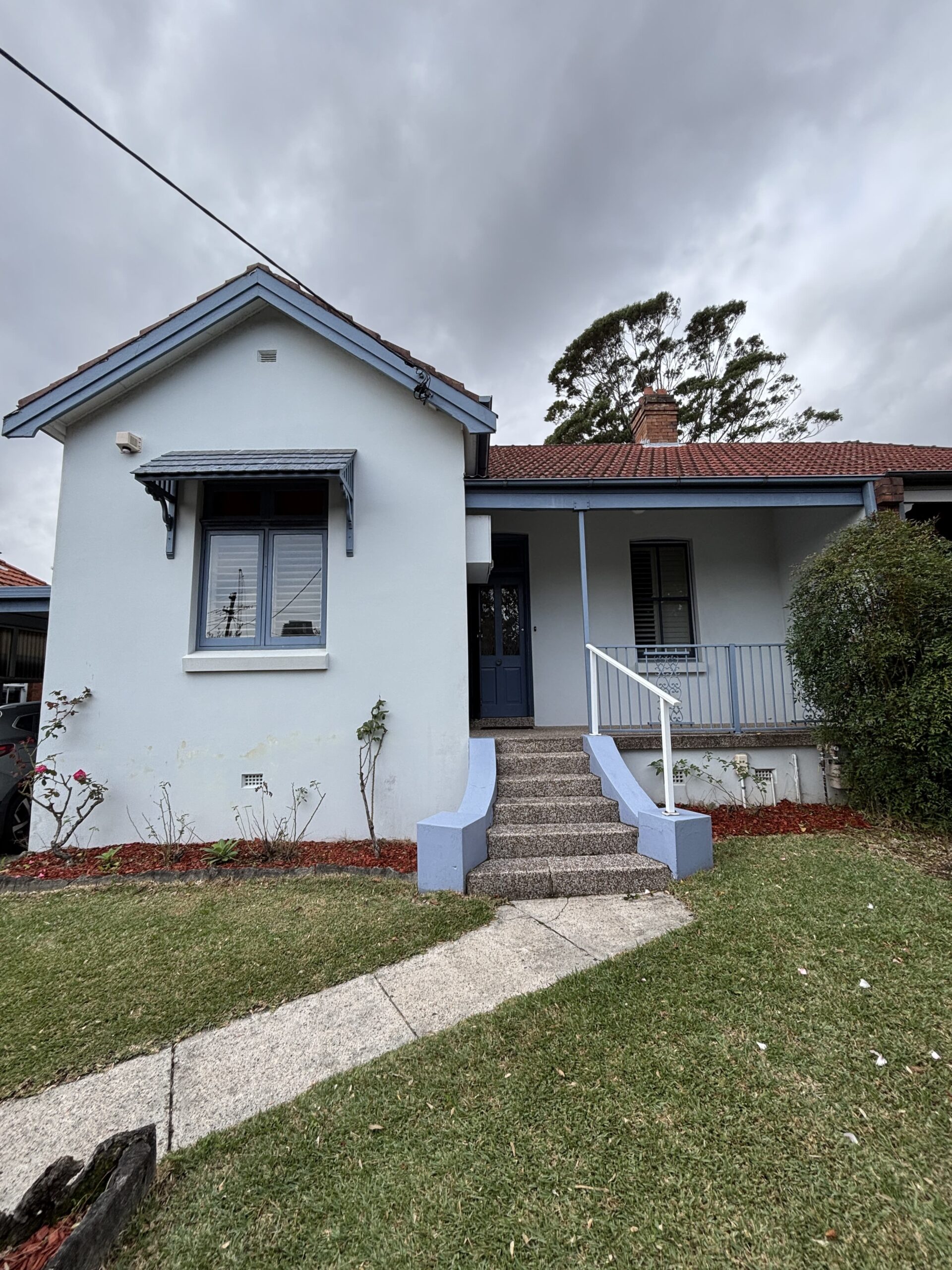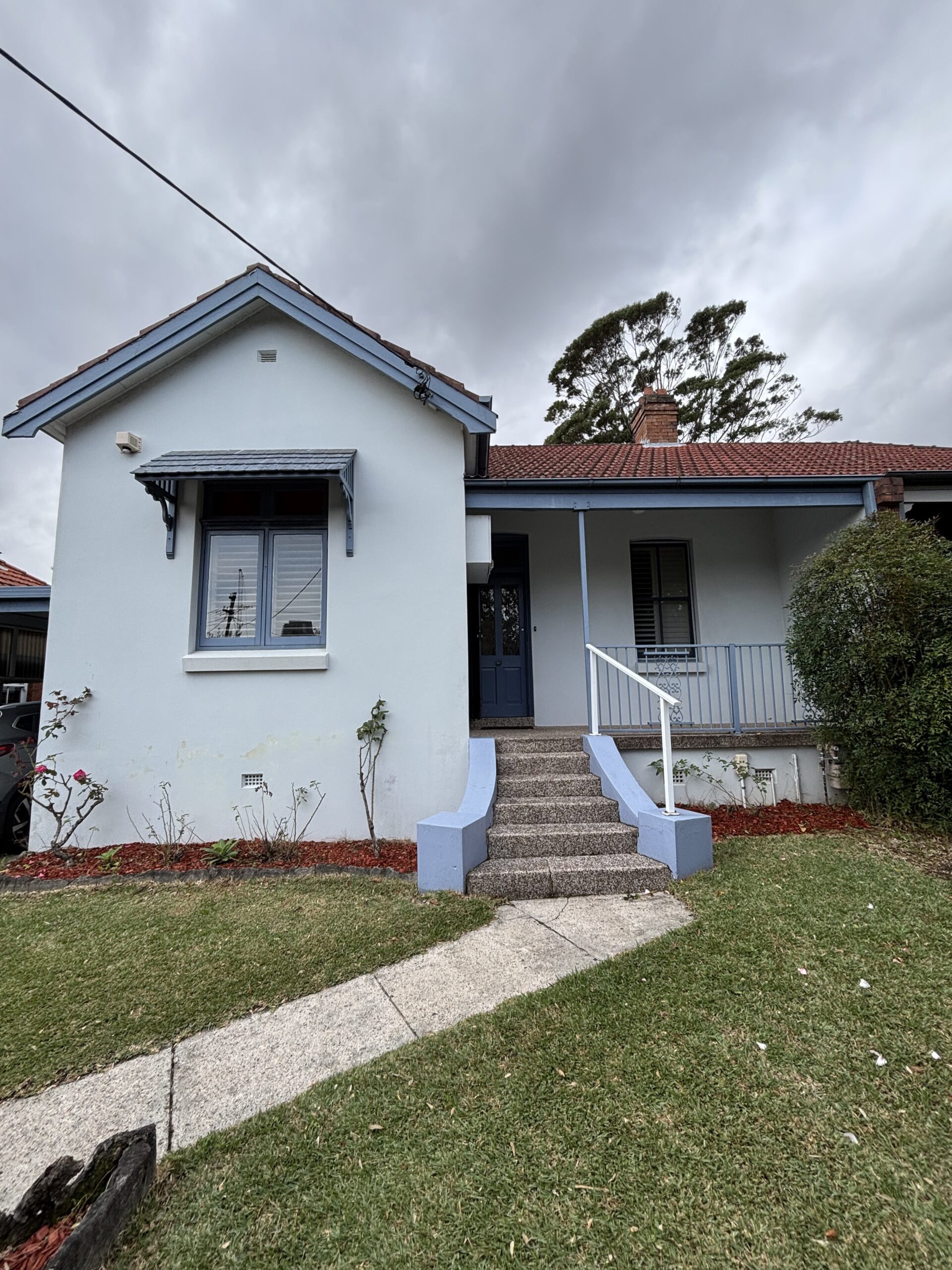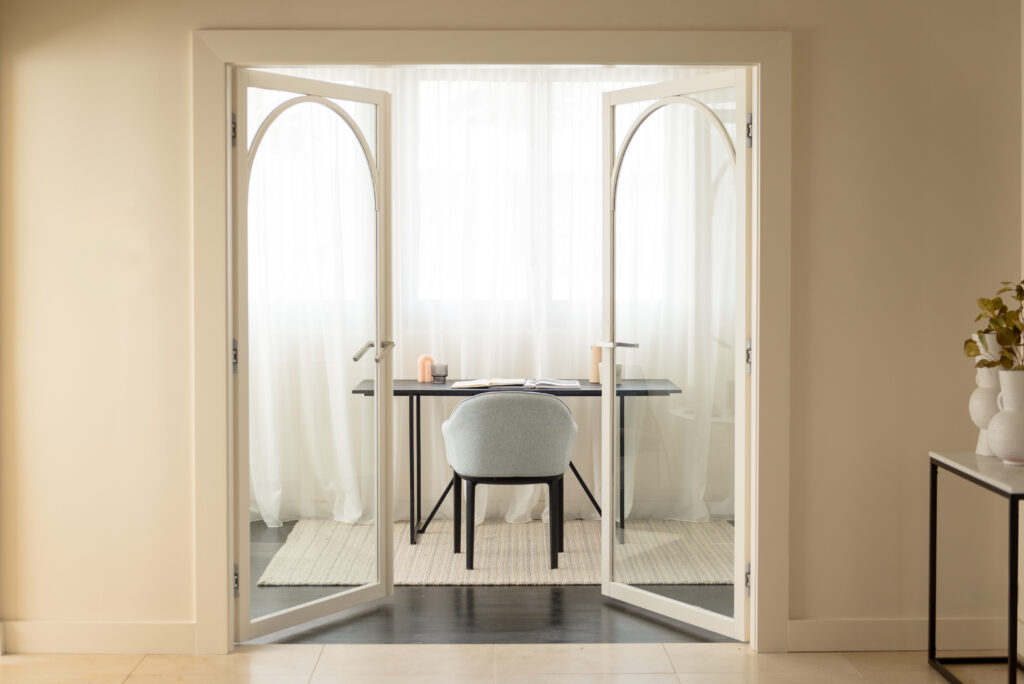
A few years ago, I was working with a buyer client who was very interested in a particular house.
The house was in a great suburb, and it was fully renovated. The problem? It was fully renovated.
Let me explain.
A few years prior, the homeowners put an extensive two-story addition on the home. This included extending the kitchen, adding a living room, adding a primary suite and walk in wardrobe. This also unfortunately took away most of the backyard and other issues were not addressed (like a garage too small for most cars).
Despite some of the drawbacks, my client was very interested in the home. However, when we looked at comparable sales, we saw that the seller was asking for more than the market value for the suburb.
When I asked the listing agent for the reasoning on the price, they responded that the seller had spent multiple 6 figures on the addition and were looking to make their money back.
Unfortunately, I’ve seen this issue many times. Homeowners renovate without considering how long they plan to live in their home and whether they will see a return on their money.
That’s why today I’m here to talk about how to avoid over renovating.
Whether you’re planning a minor facelift or a major overhaul, read on to discover how to find the perfect balance between creating your dream home and protecting your investment. By taking the precautionary steps today, you can make smart decisions in your renovation.
Evaluate your 5-10 year plan
Before I get into my tips on how to avoid over renovating, I want to first point out that if you envision this to be your forever home, you may be able to ignore my advice.
The reason being – if you have no intention of selling, the amount you spend on renovations doesn’t matter, as long as you are happy in your home.
If you DO plan on selling eventually (like maybe you will want to downsize or want to move closer to family), it’s a good idea to evaluate how long you plan to stay in your home. If you’re thinking less than 5 years, you will definitely want to be conscious of over renovating.
However, if you are thinking of a longer period, then house price growth may work in your favour. For example, in the last 10 years Sydney house prices have doubled.
It’s still worth it to be mindful with your renovation expenses, but take comfort in knowing your home value is likely going up the longer you are in your home.
Set a realistic budget
Now that you’ve established how long you think you’ll live in your home, it’s important to look at your finances.
When renovating, most people look at how much money they have and determine a budget from there.
Here’s the thing though… just because you have the money to spend, doesn’t mean you should spend it.
Let me explain. Renovations typically have a standard range and can increase or decrease based on the level of finishes.
Here’s an example:
A homeowner decides they have a budget for $60,000 for their bathroom, without considering that standard bathrooms in their local area are quoted for $30,000.
Because they are not paying attention, they opt for higher cost features like floor to ceiling marble tile, heated towel racks, and adding a skylight.
While the end product is beautiful, it’s well beyond what is expected in the market and the homeowner won’t make back their investment if they sell in the next few years.
If they instead approach their bathroom renovation by doing research and asking other homeowners / builders / suppliers what bathrooms in their area typically cost, they can keep to a more restrained budget and select finishes that are appropriate for the local area.
Another thing to consider, especially if homeowners are planning to sell within the next few years, is how much value will this renovation add to the home?
This may also help guide the budget and some of your decisions, such as making sure there’s a bathtub for resale to families with young children.
Prioritize Needs vs. Wants

The next thing to consider is what is an essential need and what is a desirable want.
While it’s natural to have a vision for your dream home, it’s equally important to prioritize your renovation projects based on necessity, functionality, and budget considerations. Here’s how to strike the right balance:
1. Make a list
Start by listing all the renovation ideas and projects you have in mind, no matter how extravagant or ambitious they may seem.
2. Categorize your list
Divide your list into two main categories: “Needs” and “Wants.” Needs are renovations that address structural issues, safety concerns, or essential functionality. Wants encompass aesthetic upgrades and non-essential improvements.
3. Assess necessity
For the “Needs” category, carefully evaluate the urgency and necessity of each item. Ask yourself questions like: Does it impact the safety of my home? Is it essential for daily living?
4. Set Priorities
Within the “Needs” category, establish priorities based on immediate requirements and potential long-term consequences. Projects with safety implications or those that can prevent further damage should be top priorities.
5. Review budget constraints
Review your budget and allocate a portion of it to the “Needs” category. Be realistic about what you can afford and focus on addressing critical issues first.
6. Explore cost-saving solutions
Look for cost-effective ways to fulfill your needs without compromising safety or quality. Sometimes, minor repairs or alternative materials can achieve the same goal at a lower cost.
7. Address wants strategically
Turn your attention to the “Wants” category. Consider which of these projects align with your budget and the overall scope of your renovation. It can also be advantageous to research the local market to see if your wants also align with what local buyers are looking for.
8. Planning
Consider dividing your projects into phases or a long-term plan. Not all projects need to happen at once and you may find that doing them in stages is best for your budget.
By prioritizing your renovation projects based on needs versus wants, you ensure that essential improvements are addressed first, and your budget is allocated wisely.
This approach not only helps you make informed decisions but also prevents you from overspending on non-essential upgrades.
Ultimately, it leads to a more efficient and cost-effective home renovation that enhances your quality of life while preserving your financial well-being.
Avoid Over-Personalization
The next thing potential issue I normally see is renovations that are too specific for the homeowner and will be a turn-off for buyers.
Here’s a real-life example. I once showed a home that was owned by a tradie who specialised in stonework.
They loved stone so much… nearly every inch of the home was covered in stone.
Of course there were the typical spots, like the fireplace and outdoor garden beds. But then there were some not so typical spots like the kitchen splashback, the shower, and the walls of the man cave.
This home was so specific to the seller and while my buyer clients liked some of the stone work, they found it to be a little too much and were making calculations in their head of what needed to go and how much renovations would cost (hint: removing stone is not cheap).
So while home renovations provide an opportunity to customise the home to your personal style, it’s equally crucial to strike a balance and avoid over-personalization.
Here’s why and how:
1. Appeal to a broader audience
When renovating with an eye solely on personal preferences, you risk limiting your home’s appeal to potential buyers in the future. Keep in mind that you may not live in the same house forever, and resale value is a critical consideration for most homeowners.
In that example, having a man cave with stone walls appealed to the owner, but might not for a family who would use the space as a playroom and consider the stone walls to be a safety hazard.
2. Timeless design elements
Opt for timeless design elements that have enduring appeal. These include classic fixtures, materials, and architectural details that won’t go out of style quickly.
Sometimes homeowners will renovate with trendy features and then be disappointed that buyers see them as outdated when they sell a few years later. Keeping it timeless ensures buyers will still love your renovations.
3. Personalization in Accessories
Consider personalizing in things that can be changed or removed easily, such as furniture and decor. It’s amazing how a room can be transformed just by it’s contents, rather than what’s attached to the walls or ceilings.
Plus, this is a great way to stay up to date with trends. It’s a lot easier to change out your tea towels than it is to replace the tile on the splashback.
4. Customize with Caution
Be cautious when considering custom-built or highly personalized features. While they may be perfect for you, they might deter potential buyers who don’t share your exact taste or plan to use the room in a different way.
Plus, overly personalized features can be expensive. Consider whether the investment is justified by its long-term value to you and potential future buyers.
5. Balance Personal and Universal
Strive for a balance between personal touches and universal design principles. Everyone likes good lighting, ample storage, and functional layouts.
6. Future Proof your Choices
Think about the long-term impact of your design decisions. Will they still be relevant and attractive in five or ten years? If not, reconsider your choices.
This is also a good time to evaluate the quality of your choices. Sometimes it’s best to opt for higher quality fixtures and finishes that won’t need replacement in the near future.
Remember that your home is not just a reflection of your personal style; it’s also an investment. By avoiding over-personalization and making design choices that balance your preferences with broad appeal, you can enjoy your space while ensuring its marketability and potential resale value down the line.
Consider Future Resale Value
Of course if you envision selling within the next 10 years, it’s essential to keep an eye on future resale value.
You can create a space that you love while also making smart choices that appeal to potential buyers down the road.
Here’s how to strike that balance:
1. Market Trends and Local Preferences:
Research what’s happening in your local market. I like to do this by searching for listings using websites like Real Estate and Domain. I’ll search both current listings and recently sold and keep it limited to homes that are similar (such as by bed and bathroom count).
This helps determine what buyers are looking for, what typical styles they’re seeing and features that are common in similar homes.
I also like to pay attention to what stands out in a good way and what has sold really well. That’s usually a sign that the home triggered an emotional appeal and may have traits you’d like to copy.
2. Kitchen and Bathroom Updates
Kitchens and bathrooms are usually what buyers will typically consider renovating first. Consider updating these areas with modern fixtures, quality materials, and a timeless design.
3. High Return Renovations
Some renovations typically yield a high return on investment (ROI). These include energy-efficient upgrades, new flooring, and exterior updates for curb appeal. I’ve also found that outdoor living is very important to Australians so a great backyard or outdoor space is very appealing.
4. Maintenance and Repairs
Address any necessary maintenance and repairs promptly. Neglected issues can become costly problems that deter future buyers.
5. Energy Efficiency
Energy-efficient upgrades, such as installing new windows, improving insulation, and upgrading HVAC systems, not only save you money but also make your home more attractive to eco-conscious buyers.
Plus, as the seven-star energy rating is now standard in new builds (in NSW), buyers may start to look for similar features in existing homes.
6. Consult a Real Estate Agent
If you’re unsure about which renovations will provide the best ROI in your area, consult a local real estate agent. They’re seeing homes every day and can provide the best insights into what buyers are looking for and which renovations are worth the investment.
By considering future resale value now, you ensure that your home remains a valuable asset.
DIY vs. Hiring Professionals
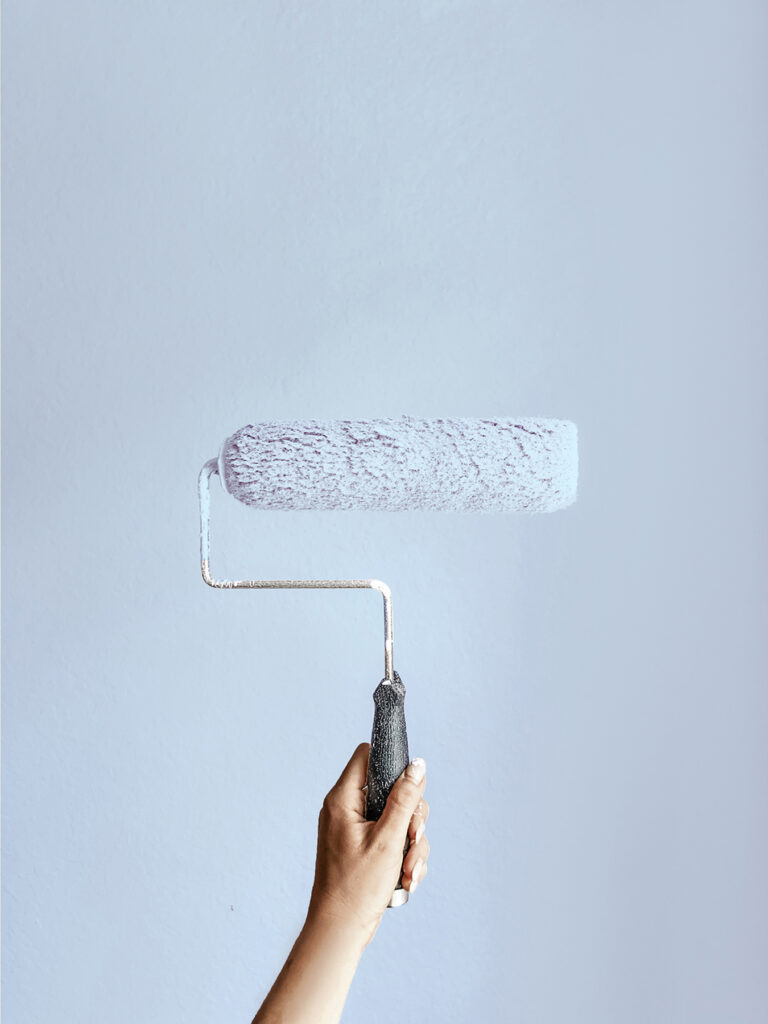
Now that you’ve decided what renovations to do, you’ll need to decide how to complete the work. It can be really tempting to save money by doing it yourself and there are some advantages as well as drawbacks to consider:
1. Skill & Experience
First of all, do you have any relevant skills and experience doing it? If you do, that’s great and may be a great way to save on labour costs and give you some pride knowing you contributed to the renovations.
If, however, you’re planning on watching a few YouTube videos and making a trip to Bunning’s, you may want to reconsider, especially for riskier renovations involving plumbing and electrical.
2. Project Complexity
Consider the complexity of the renovation. While DIY may work well for small, straightforward projects like painting or minor repairs, larger and more complex renovations often require professional expertise.
3. Time and Availability
Evaluate your availability and the time you can commit to the project. DIY projects can be time-consuming, and you’ll need to balance renovation work with your daily responsibilities.
4. Cost Considerations
Compare the costs of DIY with hiring professionals. DIY projects may seem cost-effective upfront, but consider the potential costs of tools, and materials. Professionals have the necessary equipment and skills to get the job done efficiently.
Plus, fixing mistakes may end up being more costly than hiring the professional in the first place.
5. Council Approvals and Codes
Local trades will know what projects require council approval, such as a CDC or DA. And if you think you can sneak by without one, you risk getting your site shut down and fined (like pop star Tones and I who recently got in trouble for her Frankston property).
Professionals will also be familiar with local building codes and can ensure compliance.
6. Safety Concerns
Safety should be a top priority. DIY projects can pose risks if not done correctly. Hiring professionals reduces the likelihood of accidents and ensures the work meets safety standards.
7. Quality and Results
It should be no surprise that typically work done by professionals will be better quality and likely look better.
8. Warranty and Guarantees
Trades off warranties and guarantees on their work, which may be important if you plan to sell. If the buyer finds a defect, they may be able to come back and claim you’re at fault.
9. Consider Owner-Builder
An owner-builder model may be a good solution where you can do some DIY work and use trades for the rest. There are a lot of things to know about it though, so check out NSW Fair Trading’s website for more information. I also did an Instagram post which you might find helpful.
Please note, there are instances where you can’t be an owner-builder and must use a builder, so please do your research to make sure you are in compliance. I did another Instagram post about this topic and this NSW Fair Trading page gives more information.
Get Multiple Quotes from Trades

Now that you know if you need a builder or individual trades, it’s important to select the right ones for your job. One way to do this is to get multiple quotes (the general recommendation is at least 3).
Here’s why and how to go about it:
1. Avoid overpaying
If you only get one quote, you have nothing to compare it to. How do you know that you’re paying market value? How do you know that it’s inclusive of everything you need?
2. Assess different approaches
Builders may have varying approaches to your project, which can affect the scope, timeline, and cost. Multiple quotes let you assess these differences.
3. Verify the scope of work
Each builder’s quote should outline the scope of work, materials, labour, and any additional costs. This transparency helps you understand what you’re paying for.
4. Check licences and insurance
Before requesting quotes, ensure that the trades you’re considering are licenced and adequately insured. This protects you from liability in case of accidents or damage during the project.
There are also multiple licence types that allow for different levels of work. It’s important to know that your trade is licensed for the specific work they will be doing. You can do a licence look up here.
In addition, any tradie or builder in NSW must have Home Building Compensation (HBC) cover for each home building project over $20,000 including GST. You can check this here and you should obtain proof of HBC cover from your builder before they start work.
5. Check their past work
You can request references and check up on their past work. I usually take these with a grain of salt – if they’re giving you contact information of past clients, they know they will say positive things about them.
Instead, I like to check online reviews (you can Google this) and join local renovation Facebook Groups (search the group first for the trade and if nothing comes up, create a post asking if anyone has experience).
6. Consider the size of the trade’s business
There are different ways to run a business and you may be surprised that this may affect the level of service you get.
For example, a one-man (or father-son) business may give you more personalized attention but you may find that they take longer to get back to you with quotes, paperwork and communication.
A larger building business may have great communication, however you may be dealing with different trades every day, based on who’s available.
7. Beware lowball bids
Be cautious of bids that are significantly lower than the others. This could indicate that they use inferior materials or that they’re simply rushing through the quoting process and may come back later to tell you they can’t complete the job with the price they gave you.
8. Review payment schedule
Examine the payment schedule in each quote. Avoid large upfront payments; a reasonable payment plan tied to project milestones is preferable.
Please note that most builders and trades will request some money prior to work commencing since they will need to purchase materials for your project.
9. Get everything in writing
Once you’ve selected a builder or trades, ensure that all details, including project specifications, timelines, costs, and warranties, are documented in a written contract. In NSW, a written contract is required when the contract price is over $5000 (including GST).
As you can see, getting multiple quotes from builders and trades ensures that your costs are in line with market value, but also that you choose the right person or team for your job. There are many horror stories from homeowners who have skipped over this process so make sure you do your due diligence.
Plan for Contingencies
No matter how well you prepare, unexpected issues can arise during a renovation.
The rule of thumb is to allow a contingency fund 10-20% of your total budget. This gives you an emergency cushion to cover unforeseen expenses, such as finding asbestos or needing to make last minute changes.
The best part about a contingency is that if all goes well, you won’t need to use that money and your renovations will come in under budget. However if you do need it, it will help mitigate a lot of financial stress.
Conclusion
Home renovations can be exciting. However, the key to a successful renovation lies in careful planning and informed decision-making.
By following the strategies outlined in this guide, you can make great decisions while also maintaining a valuable asset.
If you are in the Sydney area, I offer consultations to walk through your home and give you recommendations on where to add value. Even if you have no intention of selling, I can talk you through your plans and guide you in your decision making. You can schedule this here.
Like this post? Pin it for later!
